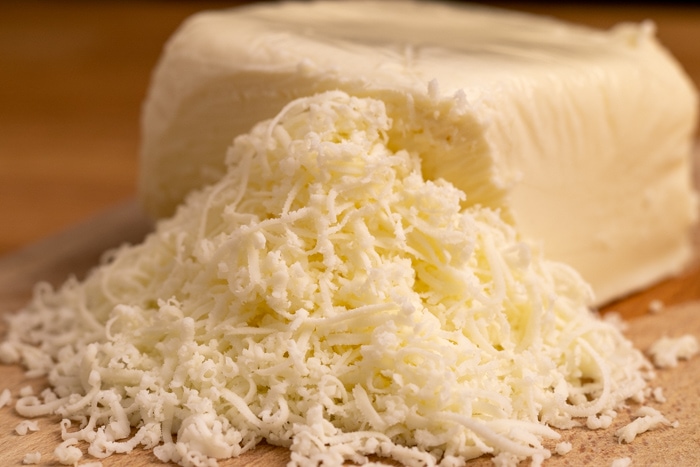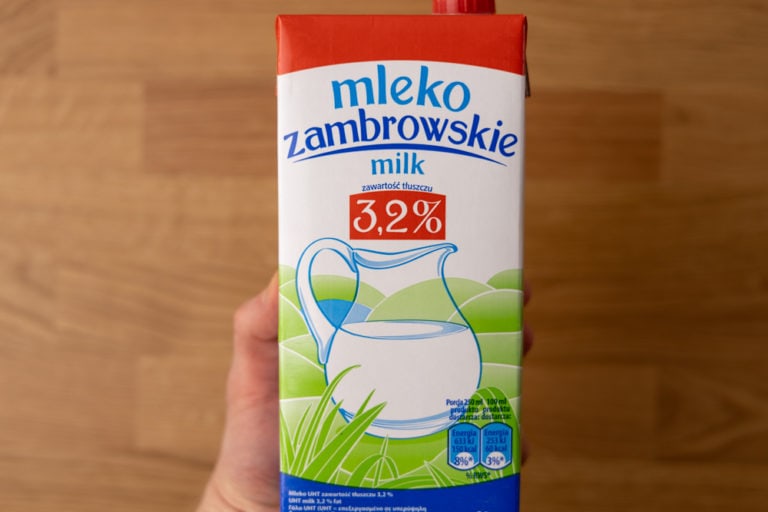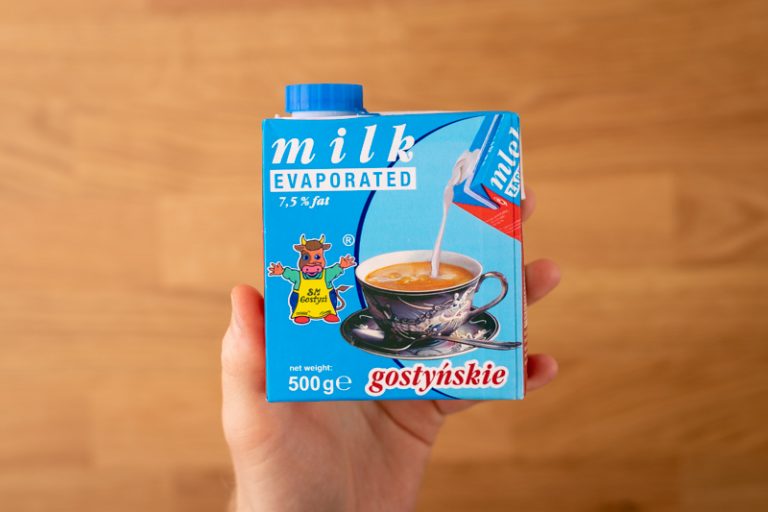How Long Does Feta Cheese Last and How to Tell if It’s Bad?
Just used half of a freshly open feta cheese block and wondering how long will the remaining half be good for?
Or maybe your half-open container of crumbled feta has been in the fridge for a few days already, and you need to know how long feta cheese lasts and how to tell if it’s safe to eat.
Sounds familiar?
If so, you’re in the right place. Read on.
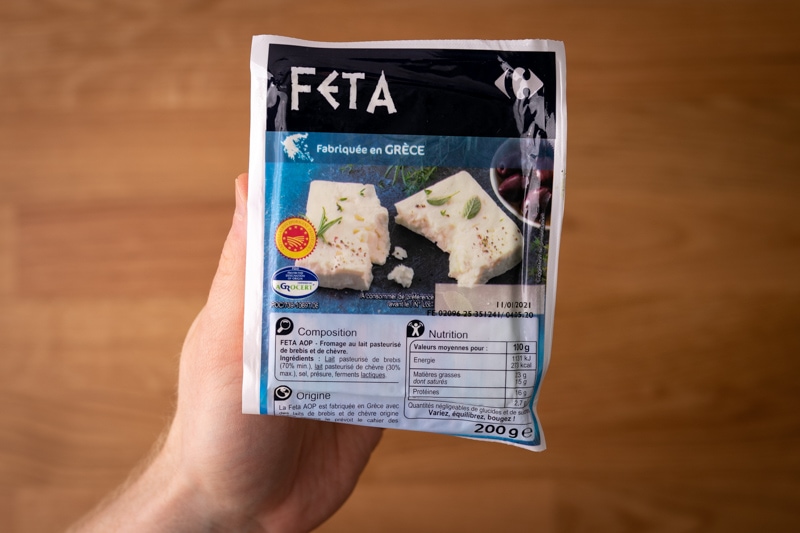
How Long Does Feta Cheese Last?
Leftover feta cheese blocks and crumbled feta last 5 to 7 days if sealed tightly and refrigerated. But if you submerge the feta block or crumbles in brine, they stay good for about a month. If you need even more time, you can freeze leftover feta cheese.
As you can tell, you can extend the storage time of feta by a factor of 4 by simply submerging it in brine. That means storing feta in brine is clearly the better option.
Now, most feta blocks are tightly wrapped with only a bit of brine around them, so there’s usually not enough to submerge the leftovers. And as for feta crumbles, there’s no brine in the container.
Fortunately, that’s not an issue, as you can easily make your own brine. I cover that in detail in the storage section.
If you decide to leave feta as is, all you get is about 5 to 7 days of storage. During that period, the cheese will slowly dry out, will likely become more crumbly, and might grow mold if contaminated.
So unless you’re certain you’ll use that feta within the next couple of days, it’s better to play it safe and store it in brine.
| Fridge | |
|---|---|
| Feta block in brine (unopened) | Sell-by + 2 – 4 weeks |
| Crumbled feta (unopened) | Sell-by + 1 week |
| Feta leftovers (without brine) | 5 – 7 days |
| Feta leftovers (submerged in brine) | 4 weeks |

Unopened Feta
Feta cheese is an aged cheese with a shelf life of a few months to a year. With such a long period, it shouldn’t come as a surprise that an unopened container or block easily retains quality for a couple of weeks beyond the date printed on the label.
As usual, it’s impossible to tell exactly how long it will last.
Here’s how you can go about it:
- Calculate how much time has passed since the “expiration” date.
- If that period is more than, say, two months, or it’s more than you’re comfortable with, toss it.
- If not, open it up and thoroughly check it for signs of spoilage described below.

How to Tell if Feta Is Bad?
Discard your feta if you notice any of the following:
- Mold. Don’t scrape it as you can do with parmesan. Feta is a moist cheese, and mold easily permeates those.
- Discolorations. The cheese is not safe if there are any dark spots or areas on the surface.
- Off smell. A slightly acidic odor is perfectly normal for feta, but if it becomes way stronger than that, the cheese is no good.
- Texture changes. If your feta block is slimy or starts to crumble on its own, it’s past its prime.
If there are no noticeable spoilage signs, give the cheese a taste, and go from there.
One thing that you might notice is that your feta tastes too salty. That happens most often after it’s been stored in a homemade brine for at least a couple of days.
That’s not a sign of spoilage, and you can easily fix that by submerging the feta in plain water for a few hours. I talk about it in more detail in the storage section.
The smell, flavor, and texture of feta vary a bit between brands and depending on whether it’s Greek, Bulgarian, or French feta. Don’t be surprised when testing out a different brand that their feta feels “different.”

How To Store Feta Cheese
Unlike other varieties of cheese, storing feta is all about the brine.
Brine is a solution of salt and water, and as long as feta is submerged in brine, it will last a long time.
Generally, you can buy feta in blocks packaged with brine, or crumbled and ready to use.
When it comes to where you should keep feta cheese, the fridge is the place to go, as both varieties require refrigeration.
Now let’s talk about storing each of the varieties in more detail.
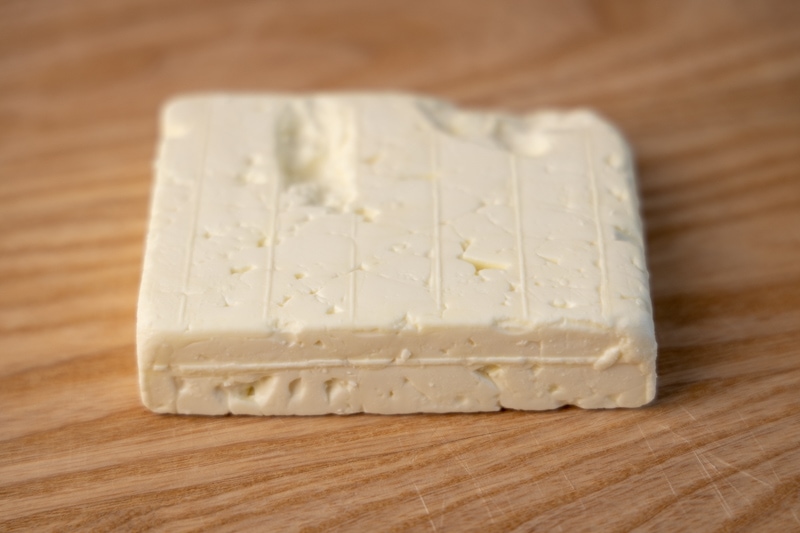
Storing Feta Cheese Blocks
As long as a feta block is unopened, it’s perfectly fine in its original packaging. But once you cut open the block and have leftovers, you need to make a decision.
If you expect to use the cheese within a few days, you can wrap the cheese with a plastic wrap, or put it into a freezer bag or an airtight container, and call it a day.
If you’d like to store it for longer, you need to submerge it in brine. To make your own brine, you add 1 teaspoon of salt per 1 cup of water.
You need to make enough of this solution, so that it covers the leftover block entirely in an airtight container. Once you got that done, throw the sealed container into the fridge.

Storing Crumbled Feta Cheese
Crumbled feta works pretty much the same way. Once you open the package, seal it tightly before putting it back into the fridge.
If you would like to store the feta for an extended period, prepare enough brine (see above) to cover the crumbled cheese entirely, then refrigerate the container.
You might be afraid that your feta will turn out too salty, but you can fix that if need be.
If your feta is too salty, you can rinse it with water or even submerge it in water for half an hour before serving. This way, the water will take some of the salt back, and the taste of your feta will improve.
Of course, first, you should check the saltiness of the cheese before you start the water treatment.

Want to learn more about cheese in general?
Check out our guide:
Rotten Records: Share Your Snap!
Caught some food past its prime? Upload your photo to “Rotten Records” and help others spot the signs of spoilage. Every image makes our food community safer and more informed!

